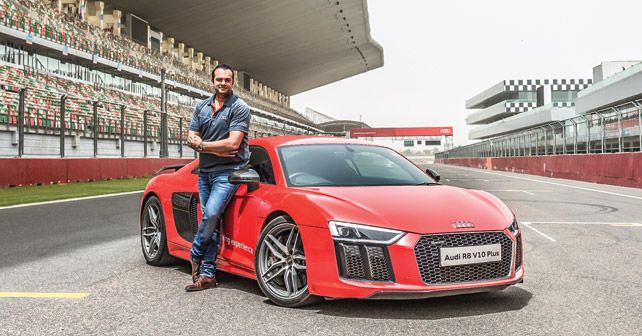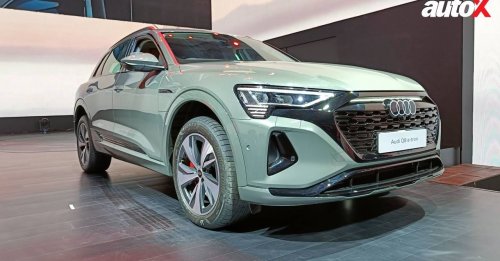
We sat down with Rahil Ansari, Head of Audi India, to talk about the challenge of operating in an ever-changing policy environment, the shift in customer preference towards petrol vehicles and Audi India’s plan for EVs.
The past couple of years have been a challenging time for the Indian automotive industry, given the lack of a clear roadmap. How are things looking for you now?
Well, you’re right! The past couple of years have been challenging in terms of timing, for there have been lots of policy changes in the past 12 months. The GST implementation was a very good move, but, unfortunately, the tax increases on luxury cars made things challenging – so it’s become difficult for us to fully exploit the potential of the luxury car market. What challenges us the most is that we don’t have planning security. What I mean by that is the fact that, in the past, many of our long-term plans were compromised because of frequent changes. I think a smart move would be to make luxury cars more affordable in India, as this will help with increased sales in the luxury market – which in turn will generate more tax revenue for the government. And more sales mean more investment in new and innovative products. Of course, with more sales, we’ll also have to expand our sales infrastructure to cater to the demand, which in effect will also generate more employment.
I know it sounds simple, but it really isn’t because the implementation is basically what’s missing. But I’m confident that it’ll happen, for we still believe that the market has a lot of opportunities. So, we are pretty hopeful. One positive regulation change in discussion right now is the possibility of importing up to 2,500 units of a product without homologating them in India. I think the approval of this policy would be a good step for all players, as it’ll allow us to import cars and test their potential in the Indian market before going in for a larger investment. For instance, if a particular model is accepted in the Indian market, we could test it before localizing and assembling it here in India. This is a good step overall, because if assembling it in India would contribute to the ‘Make in India’ program, which we also support. As for the current market scenario, well, the first half of the year was still challenging because of the union budget changes. The Rupee being weak didn’t help either. While things are favourable and economic signs are looking positive, what we now need is a strong Rupee – for it’s one of the pillars of the economy. The other thing that the industry is now looking forward to is the 2019 elections, which will also be key for policy continuity. As far as Audi’s outlook goes, we expect to perform better in the second half of this year with new product launches – the Q5 both in petrol and diesel, the RS5 and two special editions of the Q3 and Q7. We expect these cars to help us achieve better results in the second half of the year.
If the policy of allowing up to 2,500 units is approved, do you think that will allow you to test products like the A1 in India?
Absolutely! I think it’s one of the good examples that we can test in the Indian market. We believe that the small luxury cars segment in India has not been tested fully and still has a lot of potential. It would be an ideal scenario for us to test some different models to judge customer acceptance levels. If the response is good, then we could always take the next step. But, that’s just one segment of the market, we’ll also look at is bringing in more of our fantastic sports cars. We could also offer more niche products, for example the SQ5. I’m not confirming that we’ll offer any or all of these products at this point of time, but yes, if such regulation is passed, we’ll be in a position to consider all of these products and more for the Indian market.
The Q3 for Audi India has been a definite pillar of strength, but the competition in that segment is quite strong right now. So when do we get to see the next-generation Q3 in India?
That will take some time. Like you rightly said, the Q3 has always been a strong pillar and has been good for us. We launched it in 2012, and since then it’s been a strong seller and has also allowed us to redefine our entire strategy, with strong offerings in the Q range. Earlier India was a sedan market, and now it’s split between sedans and SUVs. And, of course, the Q3 is our bread and butter car, which still continues to sell very well with a very high level of acceptance. There are a couple of reasons for this – not only does it give you an impression of an SUV but also allows the customer the perfect entry into the Audi brand. In fact, many of our customers are happy to tell their friends and family that they’ve bought an Audi, which indeed helps us popularise the brand further.
With Euro VI emission norms, and with regulation changes happening thick & fast, have you seen a change in the petrol and diesel demand ratio for your vehicles?
Absolutely! From our perspective, it began a while back. In 2015, we had a mix of 90% diesel and 10% petrol, and, in 2017, that shifted to 70% diesel and 30% petrol. We further expect the petrol ratio to increase, so-much-so that as per the projections for 2020, we’ll have a 50:50 diesel-to-petrol ratio. To be honest, one reason for this is that we’ve expanded our product portfolio, and with the recent launch of the Q5 petrol, we’ve now ensured that we offer both petrol and diesel options in all our major product ranges. The customer mindset has also changed with regards to this because of three main reasons. The first is that the price differential between petrol and diesel has reduced. Secondly, customer perception has also changed with regards to petrol being more expensive to run, as people are beginning to realise that cost of ownership is not that high – especially if your daily commute is not very long. And, of course, there’s also the added fun of driving a petrol-engined car. So, slowly petrol is making a comeback in the Indian luxury car market.
What’s your outlook on launching electric vehicles in India?
That is going to be another exciting phase for us. We already have our plans in place. Globally, Audi is launching four EVs by 2020, and the India launch will happen in 2020 itself. We can, however, launch the car earlier too – given the availability of the required infrastructure. Having said that, we do know that our car will have a pretty high range of around 400 to 500 kilometres on a single charge, which is significantly higher than what you find at the moment. That also reflects on our customer preferences, as our customers typically don’t only drive within the city, but they also go on longer journeys. Moreover, we need to ensure that the infrastructure in the form of charging stations is in place. We can install them at our dealerships and a customers’ office and residence, but that’s not sufficient. They also need to be present at other locations. And that’s going to be a decisive factor for us in determining how soon we can launch an EV in India.























Write your Comment